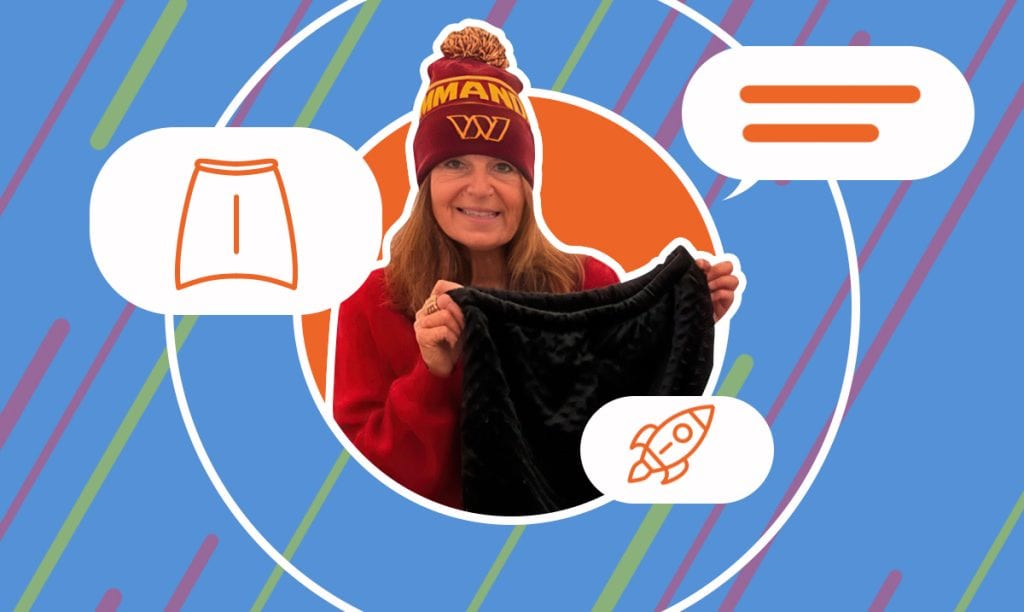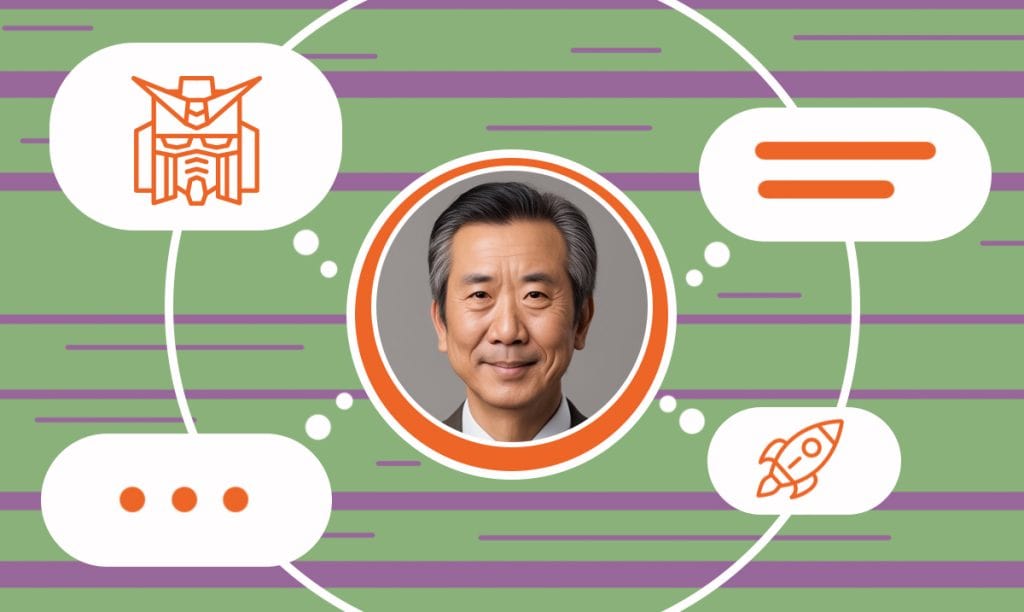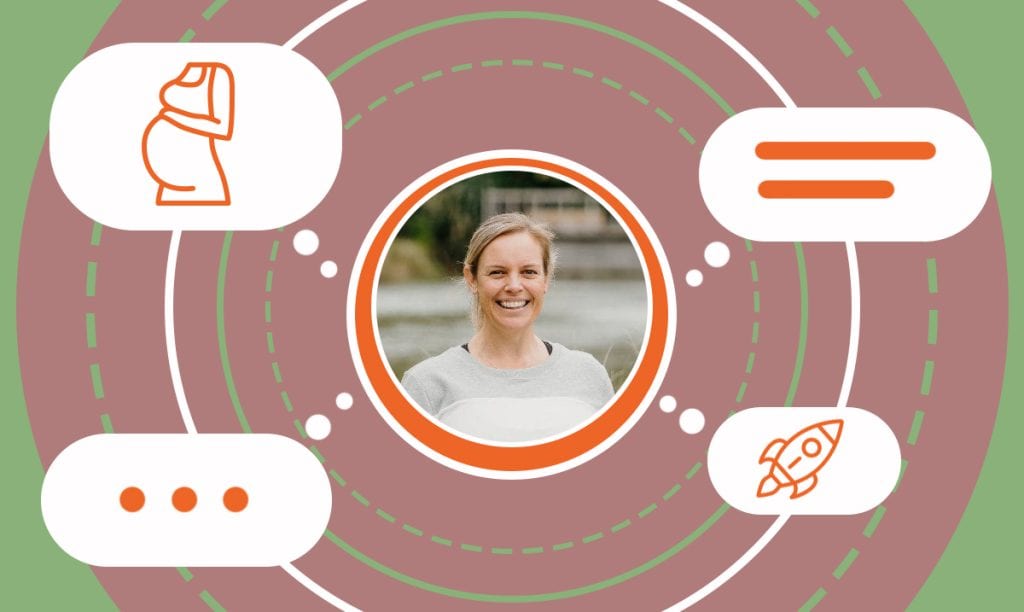If you’ve ever struggled with cold feet in bed or while lounging, CozyFeet might be the perfect solution. Founded during the pandemic by CorinneO& ...
Price2Spy’s Approach to eCommerce Price Monitoring
Written by: Howard Tillerman
Howard Tillerman is the Chief Marketing Officer for Step By Step Business and an award-winning marketing professional.
Published on February 29, 2024

In this interview, we had the pleasure of speaking with Misha Krunic, the CEO and driving force behind Price2Spy, an innovative solution in the competitive realm of eCommerce pricing. With a keen eye for market trends and a deep understanding of the challenges faced by online retailers and brands, Misha shares valuable insights into the journey of Price2Spy.
From its inception to becoming a key player in price monitoring and analysis, he discusses the tool’s evolution, its unique approach to overcoming market challenges, and its strategies for staying ahead in a rapidly evolving digital landscape. As a leader and visionary, Misha also offers his perspective on the future of eCommerce pricing strategies and provides invaluable advice for aspiring entrepreneurs in the tech industry.
Join us as we delve into the mind of a pioneer who is redefining the way businesses approach pricing in the digital age.
Origins and Inspiration
SBS – What inspired you to create Price2Spy?
Misha – It’s not a simple story. Price2Spy was born in 2010 out of pure necessity. At that time, WEBcentric had two distinct lines of business. On the one hand, there was software development. We were doing outsourced development for clients, mostly in the States, the Netherlands, and Western Europe. On the other hand, we had an e-commerce line of business where we had several online stores, mostly operating in the Serbian market, where we were typical e-commerce merchants, accepting orders, fulfilling them, handling all the trouble with the vendors, handling the delivery, etc.
In 2010, I noticed that one model of baby pram (which had been selling great for several months, and we had many orders every day) stopped selling just like that out of the blue. Why? That was the big question. I asked my guys to investigate, and a day later, they came back to me saying we have a new competitor from Novi Sad, also selling baby stuff, and they have cut our price by 500 dinars, which is like one percent. Just for this one percent, everybody went over there to buy the product. There was no customer loyalty.
Remember, that was 2010 — the time of a pretty harsh economic crisis, which hit Serbia too. At that point, I told my guys we needed to monitor our competitors’ prices. I told them to each open one Excel file and visit those websites each Monday, pick up the most important products, fill in their prices, and adjust ours if we could go lower than them. They started doing that, but in three weeks, three or four of them all together came back to me and said it was a hassle and a waste of time. I realized the same, but we still needed to monitor those competitors’ prices, so I decided to find a solution.
Since we’re a software company, we have another division with quite a few developers, and we started working on that first internal version of Price2Spy. It took us three months to put it in production, and six months after we started using it, we experienced growth of 32% in our turnover. Okay, not all 32% can be attributed to this competitor’s price monitoring — something goes to organic growth as well — but I noticed that my category managers were able to spend much more time on creative things, sourcing new vendors, and thinking of new ways to promote the products. We let automation do the dull work and let the humans do the creative work, which worked out great. After those six months, I told myself, “Since it’s working so great, let’s offer it to the world.” That’s when we named it Price2Spy. We launched it in the springtime of 2011.
For several years, Price2Spy was our activity number three because we were still busy with outsourced software development and our e-commerce web shops. Price2Spy was growing, and in 2012, it became number two. In 2014, it became number one. In 2015, our largest outsourcing client dumped us, but it wasn’t a big deal because we had something else going on. In the same year, I got an unexpected offer for the largest of these e-commerce web shops, so we sold that, and the rest of the e-commerce was transferred to a smaller company where my good friend and colleague was appointed CEO. I have dedicated all my time to Price2Spy, and that was the key moment when we focused on a single product, and we have been earning our living from that ever since.
Here’s an illustration of how competitive the field is: When I needed a solution for this real problem, I surfed the web and investigated if there was a ready-made solution, and there was none. That was in the summertime of 2010. By the time we launched Price to Spy in the springtime of 2011, there were already two solutions out there.
Unique Selling Proposition
SBS – What makes you different from other price monitoring solutions?
Misha – I could spend hours and hours on this topic. It is competitive, and with so many competitors, everyone has some specialties where they excel. In our case, first of all, it’s what we call technical ability.
In order to show your competitor prices, you, as a bot, need to visit that website and capture those prices. Nobody likes bots. All websites, especially the bigger ones, heavily invest in detecting bots and blocking them. It’s an ongoing game of cat and mouse where the website itself is the cat because it owns the technology behind it, while we are in the position of the mouse who needs to outsmart that cat and who needs to be invisible to the cat. That’s what we try to do.
By the way, as years go by, our job gets more difficult because sites are getting smarter and smarter. We see a lot of competitors struggling with that, and our advantage there is that we have quite good engineering power here in Serbia, and our engineers do manage to find workarounds and enable that mouse to stay as invisible as possible.
Client Acquisition and Retention
SBS – What strategies do you use to attract and retain a diverse client base?
Misha – That’s the lesson that we’re still learning. Approximately five or six years ago, we gave it a good thought and decided to go enterprise. Instead of having a huge number of small clients who are very volatile and may leave you at any moment (not because it’s your fault or you’re not delivering good service, but because their business is not doing well), we wanted to go for something more stable, which is enterprise. However, that’s easier said than done.
Number one, we are doing all our sales operations from Serbia, and it’s not ideal when you want to approach a big client from the West or somewhere because somebody with a foot on the ground and a local presence does have an advantage. That’s one hurdle that we have not been able to overcome yet. We have not been able to establish our local presence in the States, UK, Germany, etc., except for Holland, but that’s more because of my personal relationship there.
SBS – Do you think it is easier to get to bigger or smaller companies?
Misha – It’s definitely easier to get to small and medium-sized businesses, but it’s much more difficult to keep them. When we did that analysis and repeated it year after year, the conclusion was that we should go for enterprise clients. You do see it in our results. For example, our average client size has doubled in the last couple of years, but we would like it to go faster. But again, you know the saying. When you hunt for elephants, you can expect fewer results than when you go for mosquitoes.
Technology Integration
SBS – What role do artificial intelligence and machine learning have in the functionality of Price2Spy?
Misha – This is something that will be difficult to explain. It’s called product matching. Let’s say we have a client selling laptops, and he needs to monitor three websites. The first thing we need to do is visit these three websites and find the same laptop model to compare. With laptops, finding those exact same models should be relatively easy because laptops usually have part numbers, Eons, or something similar. That can be automated, and we have automated it. But what do you do when it’s the fashion industry or something where it’s not so easy to tell if two products are the same? One of our advantages is that we can do these things that cannot be automated.
We have a team of 25 people here in Serbia in one village in Banat. Half the village works for Webcentric, and I’m very grateful to them because they work very hard and are very loyal. But the trouble comes when you get a client who wants to monitor a million such products. It would take me up to a year to match everything manually, and that’s where we come to machine learning.
We did one pilot project several years ago, much ahead of ChatGPT, where we used machine learning to help humans filter out those matches that are definitely wrong so humans can focus on a smaller number of matches and determine if they’re good or wrong. Machine learning did not solve the problem 100%, but it did solve it 70%, so there is less work for humans.
Industry Challenges
SBS – What challenges did you face in the e-commerce pricing industry, and how did you overcome those?
Misha – I told you how it worked in 2011 when we were number three in the market. Every year since, we get one or two new serious competitors who have invested much into development and sales channels. Apart from those competitors, we get five to ten smaller ones who go for different niches or areas of the market (fashion, Amazon, Latin America, etc.). Each takes 0.2% or 0.3% of the market share, but it’s a lot when you add them up. To be honest, that’s very difficult and frustrating.
Since 2015, I’ve been noticing some consolidation happening in the market. There were some pull-outs and mergers, but I was hoping for much more than that.
Another thing that particularly relates to Serbia is the increase in engineering costs. For quite some time in those initial years, we were taking advantage of pretty low engineering costs. But those days are long gone. Serbia is now a popular IT destination, along with India, Pakistan, Ukraine, Moldova, Uruguay, Brazil, and Argentina. The market is now global. Our margin was much better 10 years ago because the costs have increased since then. The revenues went up and up, but not at the same pace.
Impact Stories
SBS – Can you share some success stories of how Price2Spy impacted a client’s business strategy and profits on a higher level?
Misha – Yes. But before answering, I’ll have to tell you something sensitive about Price2Spy. We must acknowledge that very few of our clients are willing to share with the world that they are using a tool called Price2Spy to collect competitive data from their competitors. Everybody does it, but they are reluctant to say that openly. We have such success stories, but out of 700 clients, maybe 10 gave their approval.
Let me start with an anecdote. In the early days of Price2Spy, we were particularly strong in the music industry. You would find it hard to believe how competitive that industry is because when one store drops a guitar price for three euros, 10 other stores will follow the next day. At a certain point, we figured out that we had so many clients from this industry, especially from Germany, Holland, France, etc., so we went to a musical trade show in Frankfurt that took place every April.
In that big hall, each company had its stand, and in one row, there were ten such stands. I remember out of these 10, seven were our clients. Some welcomed us in but didn’t want us to be seen in the open because they saw us talking to their competitors. Out of 20 companies competing in that market, 15 were using Price2Spy services to monitor each other’s prices. I’m very happy with that, and it’s both a success story and an anecdote.
I can also give you an example of BIG W. They are one of the top Australian retailers, and they’ve been our client for eight or nine years. Every year, they upgrade their account, adding more products and competitors to be monitored, which is a sign of success. They started just by monitoring those competitors’ pricing, but over time, they started using our more advanced modules, like, for example, dynamic pricing.
Dynamic pricing is there to help you identify opportunities to lower your prices to be more competitive, but not too much because you may jeopardize your margin. That’s what we call a clever drop, and there is also a clever raise. Clever raise shows you the products where your price is the cheapest, but you’re far too cheap, so you can increase the price a bit to be number one still, but you will make some more money.
Data Accuracy Assurance
SBS – How do you guarantee the accuracy and reliability of pricing data, especially with websites that are extremely complex or have advanced bot protection?
Misha – Very important question! It’s both a pain and a business opportunity. We cannot guarantee 100%, but we guarantee that when a client reports something, it will be resolved in a few hours. That’s one thing. The second thing is if a client goes for extra service, which we will be happy to offer, there will be a human QA behind those prices, and we will proactively fix it.
Remember, there is something really tough about our business, and that does not count only for Price2Spy; it counts for all our competitors. We scrape data from these websites, but these websites will change. When will they change, and what will be the nature of that change? We just cannot know. We won’t get an advance notice. You cannot act proactively; you can only react once they make a change on that website. We do have mechanisms that warn us about such changes (we call it a failed price check), and we do have a separate team that is busy with such changes on a daily basis. Just as an example, we monitor prices from over 100,000 websites worldwide. On a typical day, we need to adjust our scraping method for about 200 of them.
Operational Complexity
SBS – Since you have a large team and handle so much information, how do you handle the complexities of working on many different languages and currencies?
Misha – I used to be a software engineer 20 years ago, so I’ll answer in a technical way. HTML is HTML, and JavaScript is JavaScript, and it counts for Russian, Chinese, and Brazilian websites.
Future Outlook
SBS – How do you see the future for Price2Spy in the next five years, and do you have plans to expand into new markets or upgrade the product?
Misha – This is not an ideal moment to speak about expansion because IT is shrinking globally. Let’s be open about it. For example, we see that many, many clients are cutting jobs for vendors like us. I know it hurts us and our competitors quite badly.
Right now, we are in the mode of conserving our energy and preparing ourselves for the change of tide. Number one, there are a couple of technical things that we need to improve on our side. We’re working on that. Number two, we need to diversify our sales channels because 95% to 97% of our sales have happened thanks to our good search engine optimization and Google ranking. We do have some AdWords and other paid channels, but not much more.
SBS – Do you have sales managers who are searching for your future clients?
Misha – That’s a painful topic because it didn’t work as we expected. It was a pretty painful experience, to be honest, and we are now back to base. But in the next six months or so, I’ll try to find local partners in various markets with people who have experience and clients of their own, and I will try to get them on board as partners.
Advice for Tech Startups
SBS – What advice would you give entrepreneurs who would like to start a similar business in the tech industry? Is there some advice you would’ve liked to be given when starting this?
Misha – I wish I had been more ambitious 12 years ago. Price2Spy was quite nicely growing organically, but if I had been more ambitious, particularly related to local sales, we could have made it much better when there were fewer competitors than now. Now it’s much more difficult.
Second, stay close to universities because this is how you will get good and affordable talent. Try to be their first employer. Try to avoid paying huge amounts for hiring senior developers, but instead, breed your own ones. That takes quite some time, but in the long run, it pays off because these people will be your people, and they will appreciate the opportunity to grow.
I have one other piece of advice. Because I was in a luxurious position because of this e-commerce background and these outsourced software activities, our cash flow was always very good. We never needed any investment. We were bootstrapped from the very first day, which meant that my hands were free to make my own decisions. If you need an investment nowadays for any SaaS, please be careful about who you take that investment from because your long-term visions need to align. If there is a misalignment, the first year will be great, and the second year will probably also be good, but in the third and fourth years, it will lead to some very bad things.
But there is a catch. I was doing fine for quite a few years, but the burden on my shoulders was getting heavier and heavier, and, you know, we’re not getting younger (I’m 52 years old now). Approximately two years ago, I received an offer from a big Dutch software group to sell my company. My first question was about the potential buyer’s long-term strategy and if they planned to sell the company. To my surprise, the answer was “never.” They wanted to be permanent owners in the future and live from the profits of that company. I told them that’s exactly what I have been doing for the last 15 years or so. That group buys software businesses, manages them, and applies the same management principles throughout that network of companies. That’s about 120 different companies but from different verticals, and we are one of them now. Since 18 months ago, I haven’t been a sole owner. I’m a minority owner now, and I’m still a CEO. I’m a CEO who does report to somebody, but also gets help from somebody.
SBS – Is it easier now for you or do you regret making that decision?
Misha – I consider it one of the best decisions I’ve ever made. First of all, it’s hard to put a dollar value on that weight on your shoulders. It feels much better now. Second, those Dutch guys have taught me how to develop young managers within the company who will take some responsibility and ask for their autonomy. It sometimes may be difficult for me because I might disagree with something they care about but that autonomy and responsibility I’ve given them pays out in the long run.
To be honest with you, this company is much easier to manage right now. The market is getting tougher, but we’re good, and I have learned so much from this network of 120 companies that I find myself a much more mature and experienced person right now. This will sound a bit philosophical, but no solution can work well forever. You just need to recognize when the time for change comes.
Subscribe to Our Newsletter
and gain insider access to cutting-edge business insights and trends.
Featured Resources

How CozyFeet Foot Warmers Help with Cold Feet Issues
Published on February 27, 2025
Read Now

How Plaza Japan Found a Niche in Japanese Anime and Hobby Products
Published on August 26, 2024
Jun Ibaraki, the visionary behind Plaza Japan, transformed his passion for Japanese culture into a thriving e-commerce business that bringsauthentic ...
Read Now

How Natalie Created a Thriving Maternity Clothing Brand
Published on July 29, 2024
In this interview, we dive into the inspiring journey of Natalie Pitts, the CEO and founder of Go MamaMaternity. Discover how Natalie identified ...
Read Now
Comments